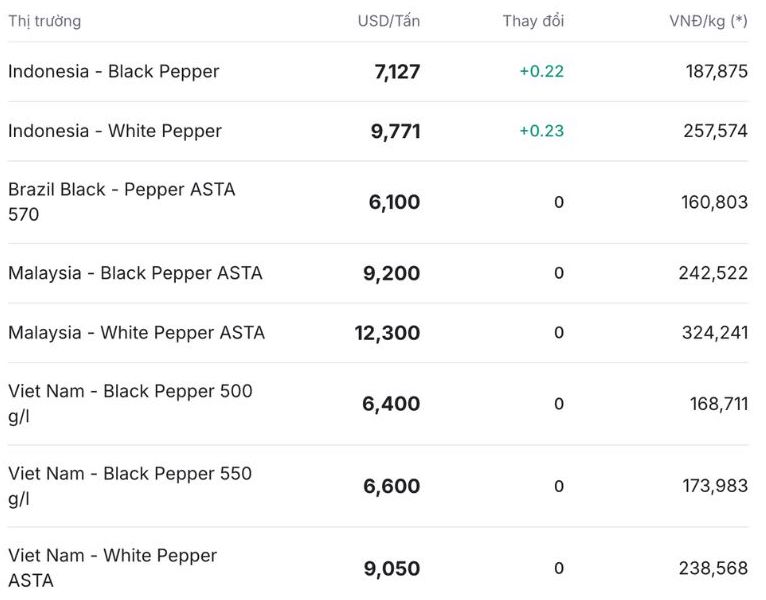Domestic pepper prices: Lower prices
As of 11:30 today (November 11), the domestic pepper market has decreased slightly, averaging 145,700 VND/kg. Currently, the price ranges from 145,000 - 147,000 VND/kg.
Most areas still maintain high prices, with Dak Lak province recording a decrease of 500 VND/kg. The price list on the market in key areas is as follows:
Gia Lai province, Ho Chi Minh City are on the market at 145,000 VND/kg. However, this is still the lowest price in the region.
Pepper prices in Dong Nai today reached 145,000 VND/kg.
Dak Lak adjusted prices, reaching 146,500 VND/kg, while Lam Dong still set the price of 147,000 VND/kg.
The fluctuations in domestic pepper prices have shortened the gap compared to the same period last year when pepper prices only fluctuated between 140,000 - 141,000 VND/kg.
World pepper prices: Steadily increasing
In the world market, pepper prices are mostly stable in the regions. In particular, the Indonesian exchange - one of the busiest markets continues to increase prices. Currently, these two items have increased by 0.22% and 0.23%, trading between 7,127 - 9,771 USD/ton (equivalent to 187,875 VND/kg - 257,574 VND/kg).
On the other hand, the Brazilian market is flat, currently holding at 6,100 USD/ton (about 160,803 VND/kg). In the same direction, black and white pepper remained unchanged, trading at 12,300 USD/ton and 9,200 USD/ton.
In the pepper export market of Vietnam, the price of black pepper of 500 g/l and 550 g/l is flat, anchored at 6,400 - 6,600 USD/ton. ASTA white pepper prices remain high, currently standing at 9,050 USD/ton (equivalent to 238,568 VND/kg).

Assessment and forecast
According to IPC's weekly report, in early November, the pepper market showed a contrasting trend between producing countries. Of which, Vietnam is the only country to record domestic prices increasing due to stable domestic demand and limited supply. Along with that, unchanged export prices show a stable trade environment.
The domestic market is entering a new harvest season, the output to the market is abundant, in the short term, the price zone will remain stable or be adjusted down slightly. However, the large inventories in Vietnam, Brazil and Indonesia will help stabilize the price list. In case the US adjusts its import and supply tax policy intermittently, the market may experience a price increase.











